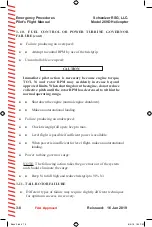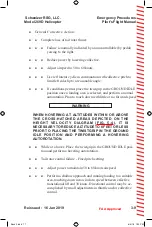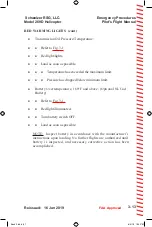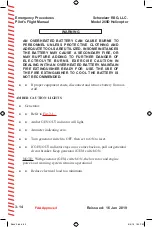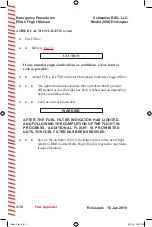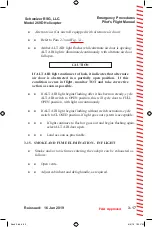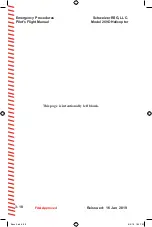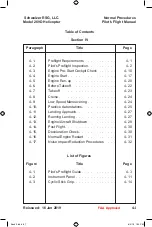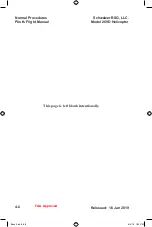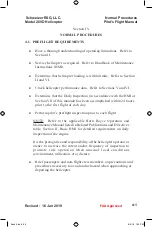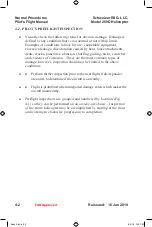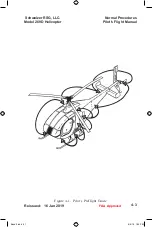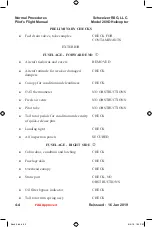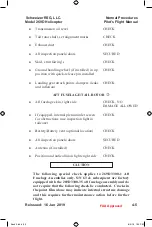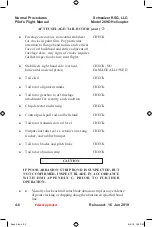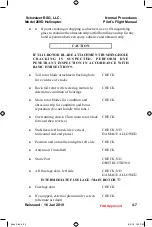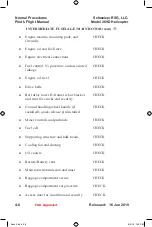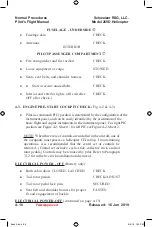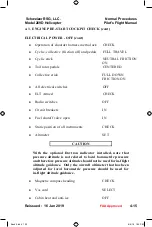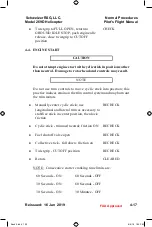
4-2. PILOT’S PREFLIGHT INSPECTION
Visually check the following items for obvious damage. Damage is
defined as any condition that is not normal or not within limits.
Examples of conditions to look for are: inoperable equipment,
excessive leakage, discoloration caused by heat, loose attachments,
dents, cracks, punctures, abrasion, chaffing, galling, nicks, scratches
and evidence of corrosion. These are the most common types of
damage; however, inspection should not be limited to the above
conditions.
Perform further inspection prior to the next flight if discrepancies
are noted, to determine if the aircraft is airworthy.
Flight is prohibited when unrepaired damage exists which makes the
aircraft unairworthy.
Preflight inspections are grouped and numbered by location (Fig.
4-1) so they can be performed on an area-by-area basis. Inspection
of the entire helicopter may be accomplished by starting at the front
and working in clockwise progression to completion.
Normal Procedures
Pilot's Flight Manual
Schweizer RSG, LLC.
Model
269D
Helicopter
4-2
Reissued:
16
Jan 2019
FAA Approved
Book 3.indd 90
8/4/19 1:25 PM

